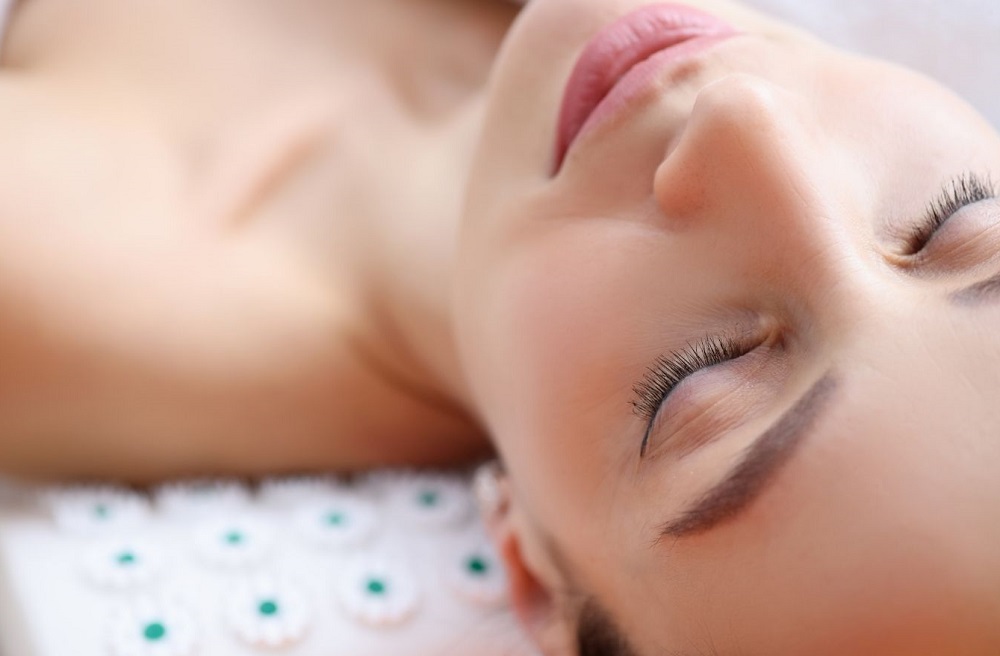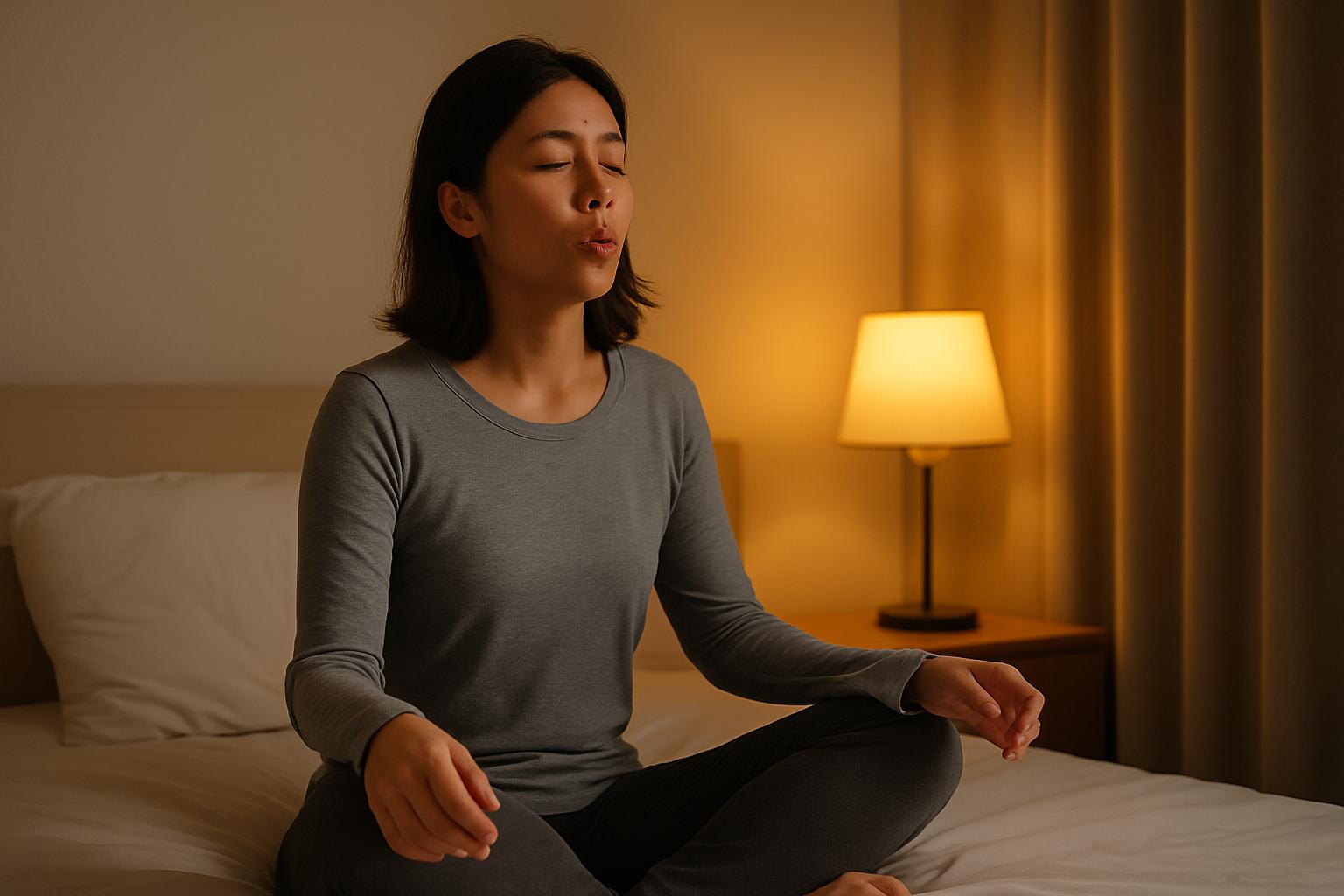Acupressure is a form of alternative healing used in traditional Chinese medicine. It involves placing pressure on specific points on the body. These are located along the body’s meridian lines, where the qi, or life force energy, flows.
Acupressure is believed to help your qi flow freely through your body and improve a number of physical and mental symptoms. There is not a huge quantity of medical or scientific research to support this, although the practice has existed for centuries.
There is an overwhelming amount of anecdotal evidence to support the effectiveness of acupressure.
To perform acupressure, you will first need to find the stated pressure point. You should then apply a firm but gentle pressure, not so much that it is causing you pain. Most people use their fingers but you could also use a massager or a pencil.
Acupoint: EM-13 (Other Names: An Mian)
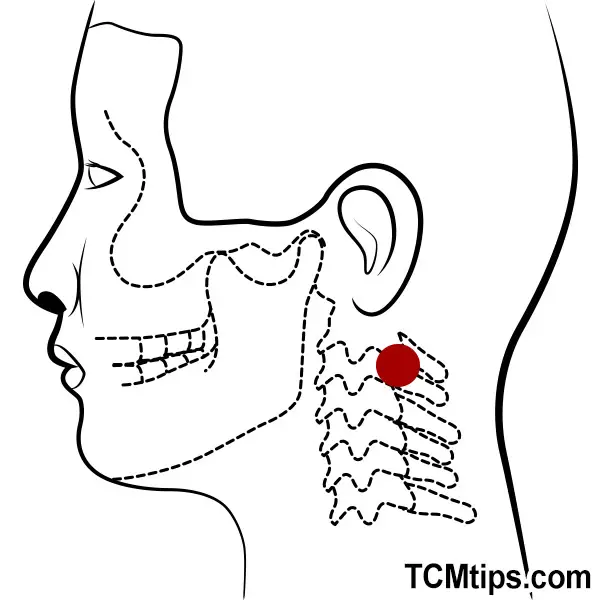
These points are located on either side of your neck, behind your earlobes. To find them, place your fingertips behind the lobes until you feel the little bone sticking out. Move your fingers behind this, and you have found the An Mian point.
This point is believed to reduce insomnia, anxiety, headaches, and vertigo. It is also suggested that it could alleviate the symptoms of depression.
Acupoint: KI-1 (Other Names: Kidney-1/Yong Quan/Gushing Spring)
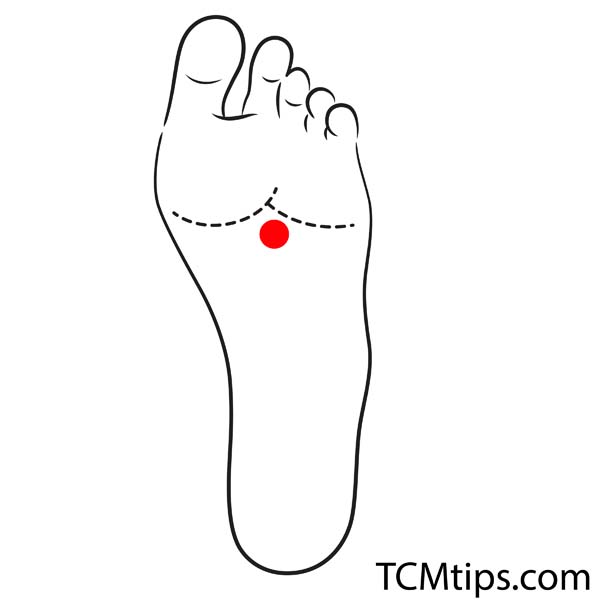
This acupressure point is located on the underside of your foot. To find it, look at the sole of your foot and gently curl your toes. You will spot a small indentation in the center of the upper third of your foot – this is the bubbling spring point.
Lie on your back with your knees bent and find the spot in question. Apply firm pressure in a circular or an up and down motion for a few minutes. This acupressure point is believed to help bring on sleep and ground your energy.
Acupoint: Ren-15 (Other Names: The Conception Vessel-15/Jiu Wei/Bird Tail)

Ren-15 is located at the solar plexus, where the left and right ribs meet, approximately 7 cun above the navel. To find it, trace your fingers upward from your belly button, following the midline of your body until you reach the point where the ribs converge. This acupoint is commonly used to regulate the Heart and calm the spirit, making it beneficial for alleviating anxiety, chest tightness, and palpitations. It also aids in resolving phlegm and harmonizing the Stomach, thus providing relief for digestive issues such as nausea and vomiting.
Acupoint: Bl-62 (Other Names: Urinary Bladder-62/Shen Mai/Extending Vessel)
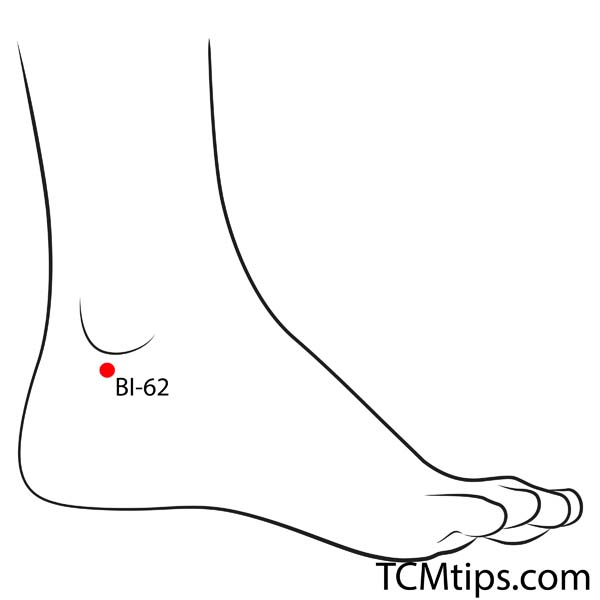
This is also known as B62, or urinary bladder 62. It is found on the outside of the foot. To locate this point, feel for the indentation just below the external ankle bone. It is commonly used to treat a number of sleep disorders.
It is also said to be helpful with alleviating lower back pain, headaches, stiff neck, epilepsy, and nerves. It should be stimulated alongside the K6 pressure point.
Acupoint: PC-6 (Other Names: Pericardium-6/Nei Guan/Inner Pass)
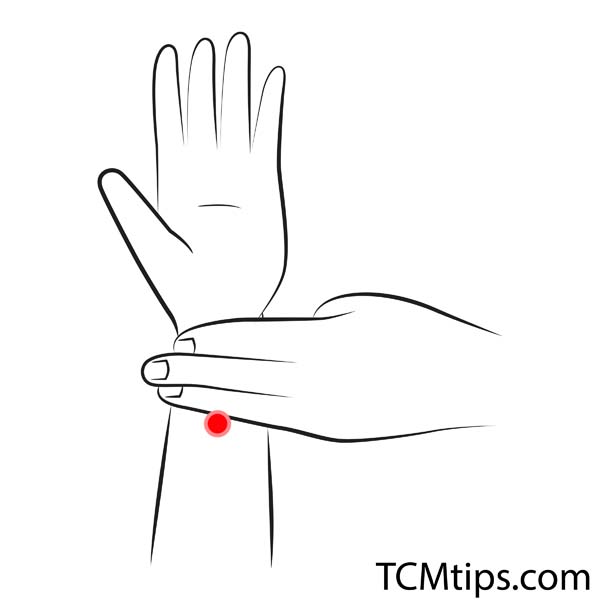
This spot is found on your inner forearm. To locate it, turn your hand so your palm is facing the sky. Follow the center of your wrist 3 finger-widths down your forearm. You will feel a space in between two tendons – this is the inner frontier gate point.
This is believed to assist with sleep, relieve nausea, and alleviate headaches and stomach pain. The point should be massaged for 4 or 5 seconds at a time.
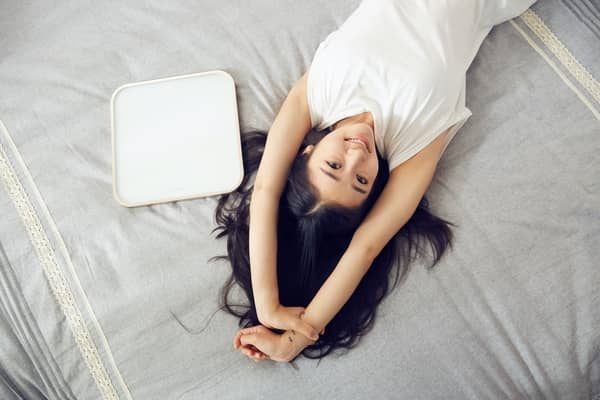
Acupoint: SP-6 (Other Names: Spleen-6/San Yin Jiao/Three Yin Intersection)
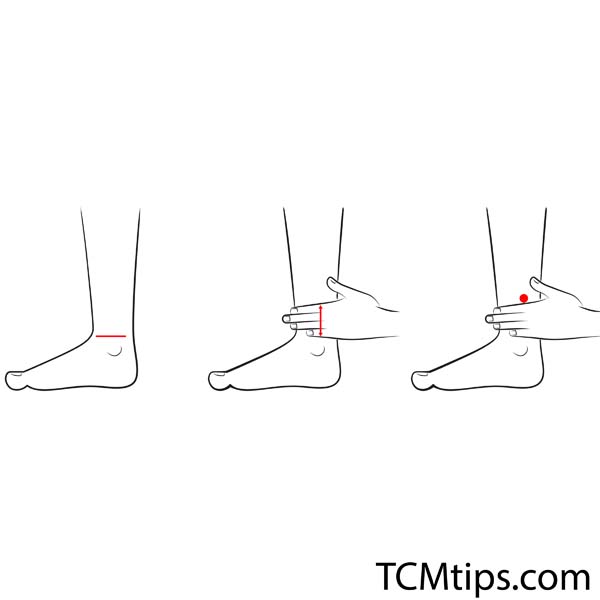
This is also known as the SP6 point. It is found just above your ankle. To find it, look at your ankle on your inner leg side. Start at the top of your ankle and measure about the width of 4 fingers up the leg. Feel for the bone above your ankle, and apply a firm pressure just behind it.
This acupressure point is believed to help alleviate the symptoms of insomnia, menstrual cramps, pelvic issues, and urinary problems.
In 2016, a study was done into the impacts of this point on breast cancer survivors. This was included as part of a wider acupressure routine and was shown to improve their quality of life and sleep. Researchers do not advise this pressure point for pregnant women.
Acupoint: HT-7 (Other Names: Heart-7/Shen Men/Spirit Gate)
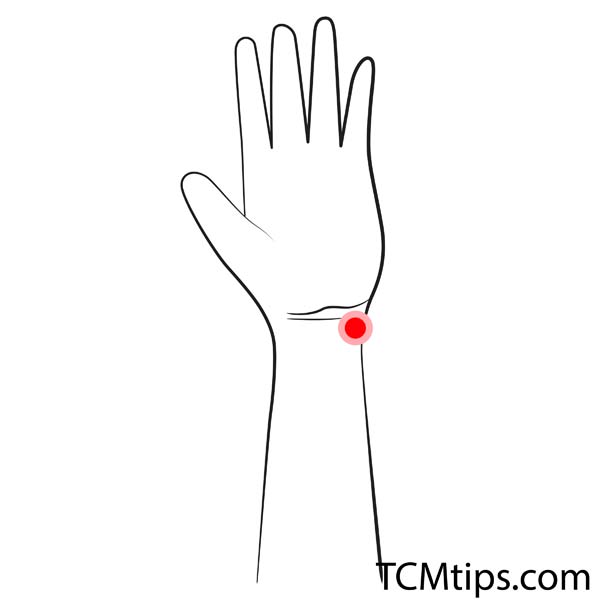
This is also known as the HT7 point. It is found on the inner side of your wrist, just below the base of your palm. To find it, turn your hand palm side up and pull your hand slightly towards your body. This will show a crease in the wrist. Spirit gate is found on the outer edge of the crease, below your pinky finger.
Studies have been done into the effects of the Spirit gate point on insomnia and Alzheimer’s disease. Both studies showed that acupressure localized to this region had a positive impact on people suffering from insomnia. These positive effects were seen not only during the studies but for a further 2 weeks afterward.
Acupoint: Liv-3 (Other Names: Liver-3/Tai Chong/Supreme Rush)

This is also known as LV3. It is located on the foot, near your toes. To find it, look for the area where your big toe and index toe meet. Apply firm and deep pressure to this area and you should feel a sense of relief.
The LV3 pressure point was used in the breast cancer survivor study mentioned above as part of the overall acupressure routine. It was found to improve sleep with 3 minutes of pressure.
Acupoint: KI-3 (Other Names: Kidney-3/Tai Xi/Supreme Stream)
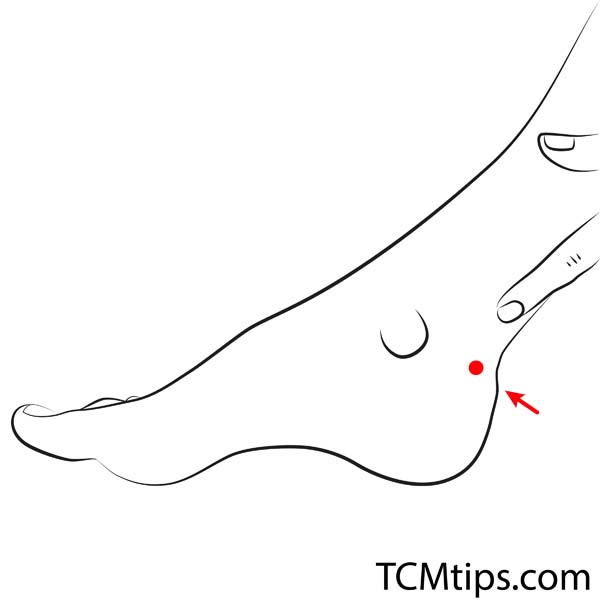
This pressure point is also known as KD3. It is located on the heel. To find it, feel just above the heel on the inside of your foot. It is in the dip just behind the ankle bone.
A 2014 study showed the positive impacts of KD3 on hypertension sufferers, specifically middle-aged and older adults. This not only improved sleep quality but also reduced blood pressure levels.
Acupoint: Bl-43 (Other Names: Urinary Bladder-43/Gao Huang Shu/Vital Region Shu)

This is also known as point B38. It is found in your back, at approximately heart level. To find it, feel between the shoulder blades and the spine. This point is used to promote restful sleep and reduce sleep disorder symptoms.
It is also used to balance emotions such as stress, grief, and fear, which are believed to worsen insomnia. The best way to target this acupressure point is to place 2 tennis balls on the ground.
Lie on top of these, repositioning them so that they fall between your shoulder blades. Breathe deeply and remain in this position for a minute.

Acupoint: GV-16 (Other Names: The Governing Vessel-16/Feng Fu/Wind Palace)
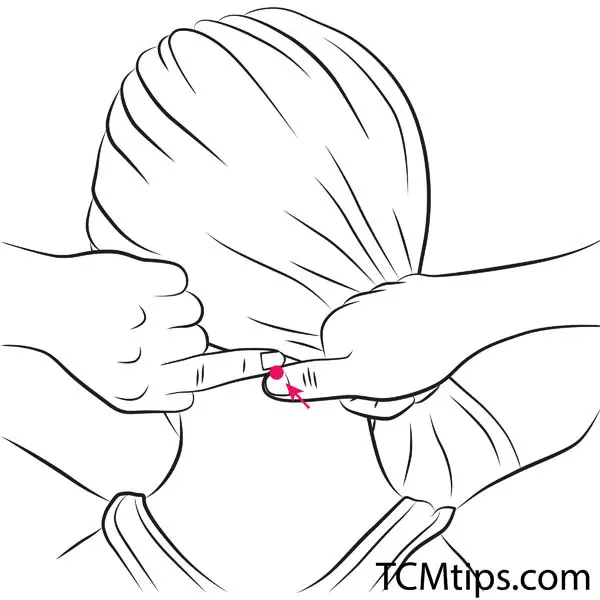
This is also known as GV (Governing Vessel) 16. It is found in the neck. To locate it, try to find the hollow underneath the base of your skull. Place your fingers into this hollow and tilt your head backward. Apply a firm pressure here for a minute as you keep your eyes closed and your breathing deep and even.
This is believed to relieve insomnia and reduce stress. There is anecdotal evidence to suggest that it could be beneficial in the treatment of mania and suicidal thoughts too.
Acupoint: GB-20 (Other Names: Gallbladder-20/Feng Chi/Wind Pool)
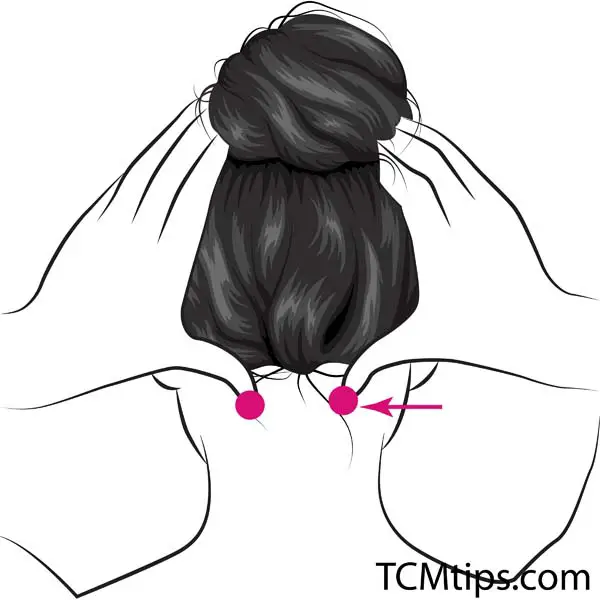
This acupressure point is actually 2 points, found on the back of your neck. To locate it you will need to feel for the bone behind your ears, and then find the groove. Follow this all the way around the back of your skull until you feel the region where the neck muscles attach.
To alleviate symptoms of insomnia you should clasp your hands and open your palms while keeping your fingers interlocked. This will form a cup shape. Place this behind your head and use your thumbs to apply pressure to the wind pool points. Massage the points for 4 or 5 seconds using circular motions as you take deep breaths.
As well as insomnia, this point is believed to reduce respiratory problems, stress, and anxiety.
Acupoint: SP-4 (Other Names: Spleen-4/Gong Sun/Grandfather Grandson)

This pressure point is located on the foot. To find it, turn your foot onto the side so that your big toe is facing the ceiling. Feel underneath the bone of your big toe for a little dip. This is also sometimes called the Spleen 4.
It is great for reducing stress and assisting with the digestion of food and thoughts.
Acupoint: EM-2 (Other Names: /Yin Tang/Hall of Impression)
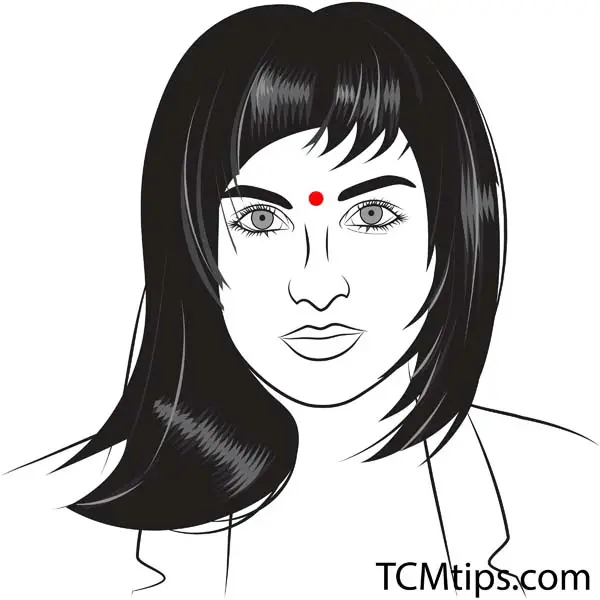
This point is located on the face. To find it, feel directly above your nose in between your eyebrows. This point is believed to relieve symptoms of insomnia, fear, restlessness, and agitation when pressed.
There is little research that has been conducted into this acupressure point, although there is an overwhelming amount of anecdotal evidence to support the effectiveness.
Acupoint: KD-6 (Other Names: Kidney-6/Zhao Hai/Shining Sea)
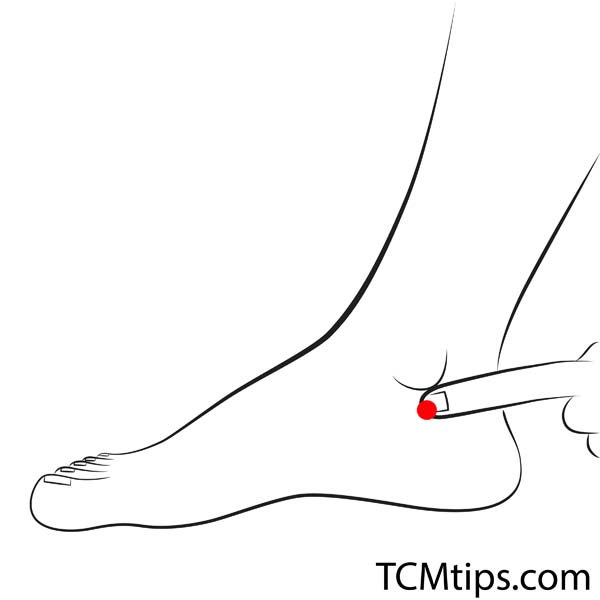
This is also referred to as the K6 point. It is found on the inside of the ankle. To locate it, feel one thumb width below the bone. Here you should find a slight depression – this is the pressure point.
How Else Can You Naturally Relieve Insomnia?
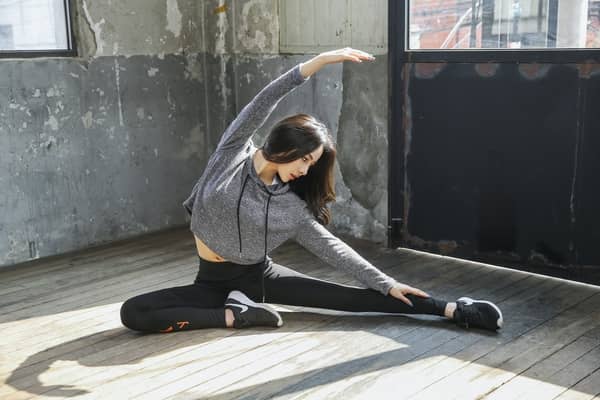
Gentle stretching or a light yoga routine before getting into bed can help to calm your body and mind. Round off the stretches with some gentle massaging of your neck and shoulders.
You can even stretch your eyes! Open them and move your eyeballs slowly in a large circle. Repeat this 3 times in each direction. Close your eyes and repeat the process all over again, focussing on taking deep and even breaths as you do so. Stretch your arms and legs out to finish the exercise.

Try our Anti-Aging Gua Sha Tool designed to bring out your skin’s natural glow.
Best Gua Sha Product- Anti-Aging: The tool is designed to target 11 specific aging signs such as wrinkles and sagging skin. By following the 7-step routine, users can improve skin firmness and reduce fine lines naturally.
- Enhances Skincare Routine: It works effectively with serums and lotions, boosting absorption and efficacy of skincare products.
- Visible Skin Improvement: Users can expect a smoother complexion, reduced puffiness, and a more youthful appearance.
 P. Sze
P. Sze 